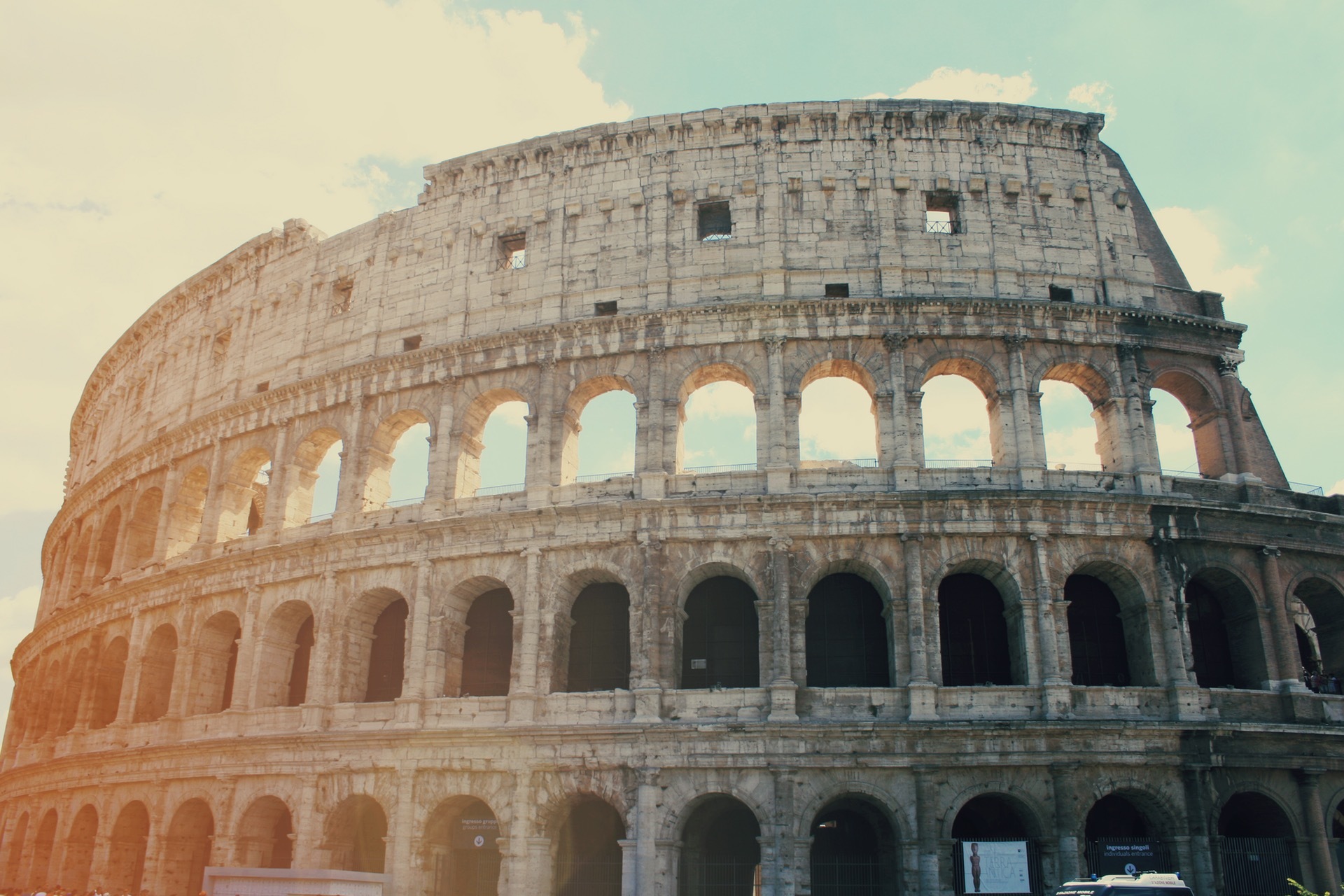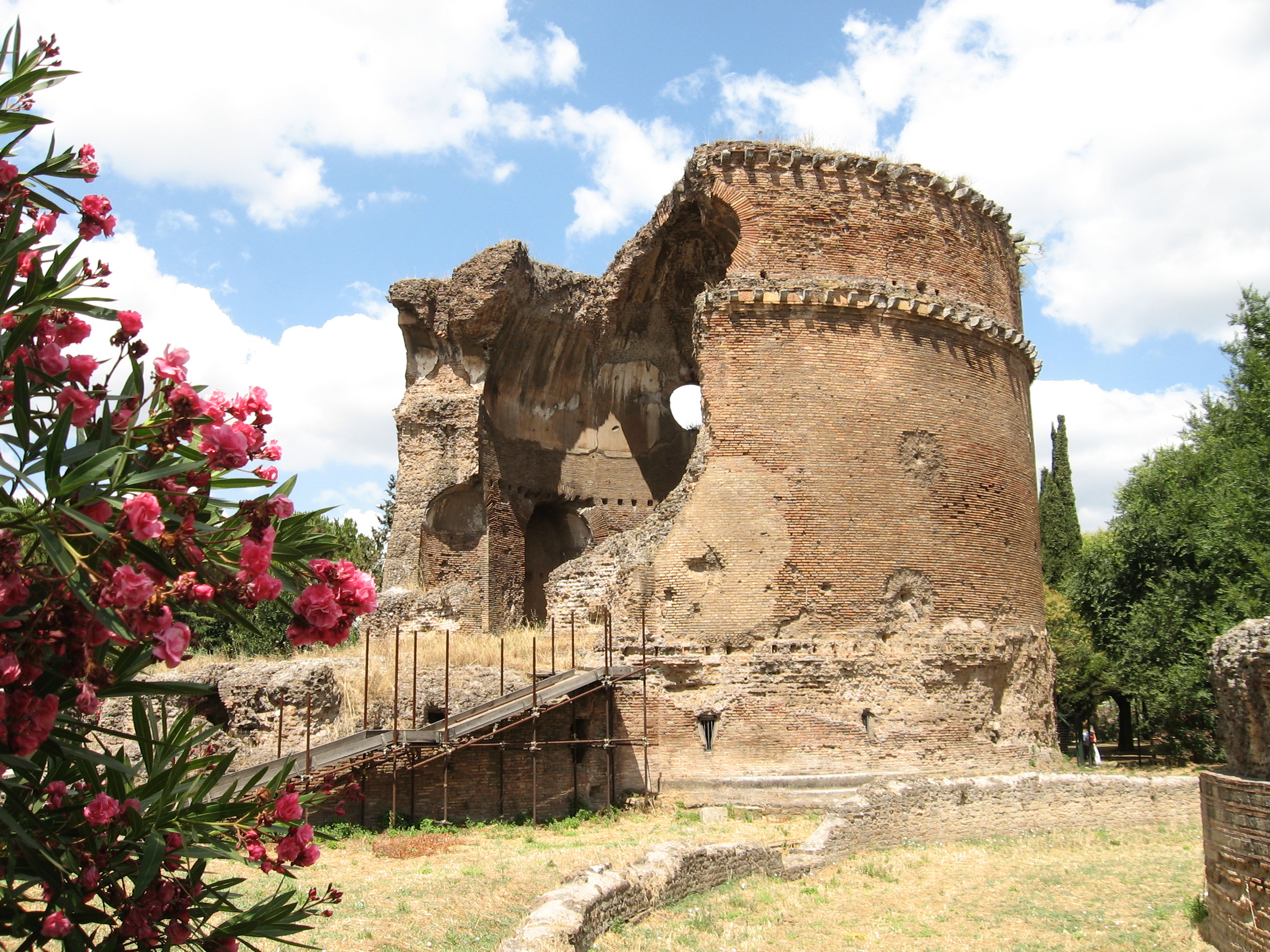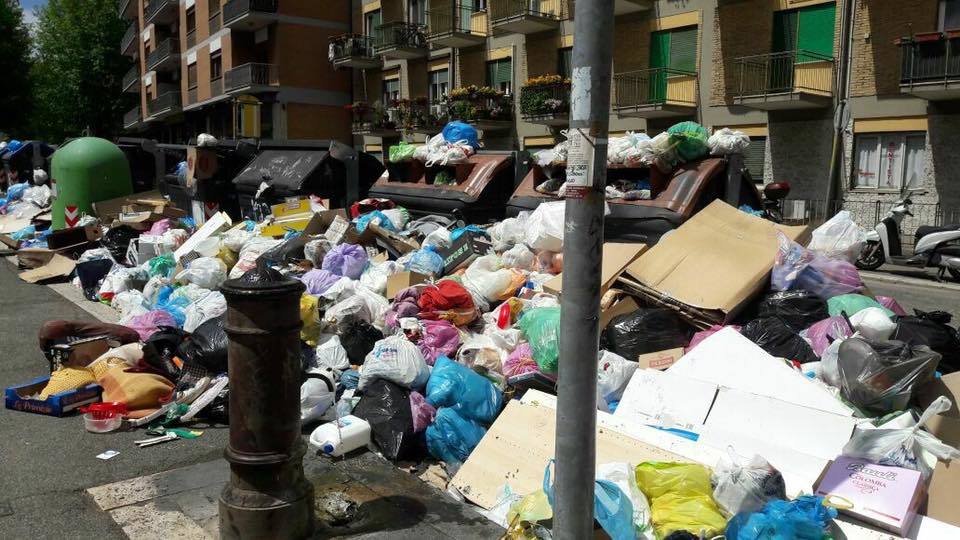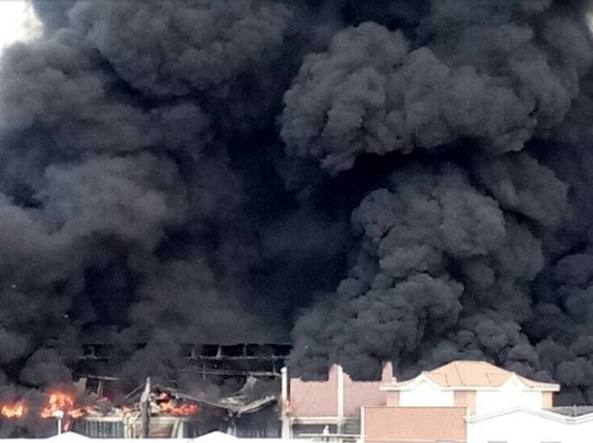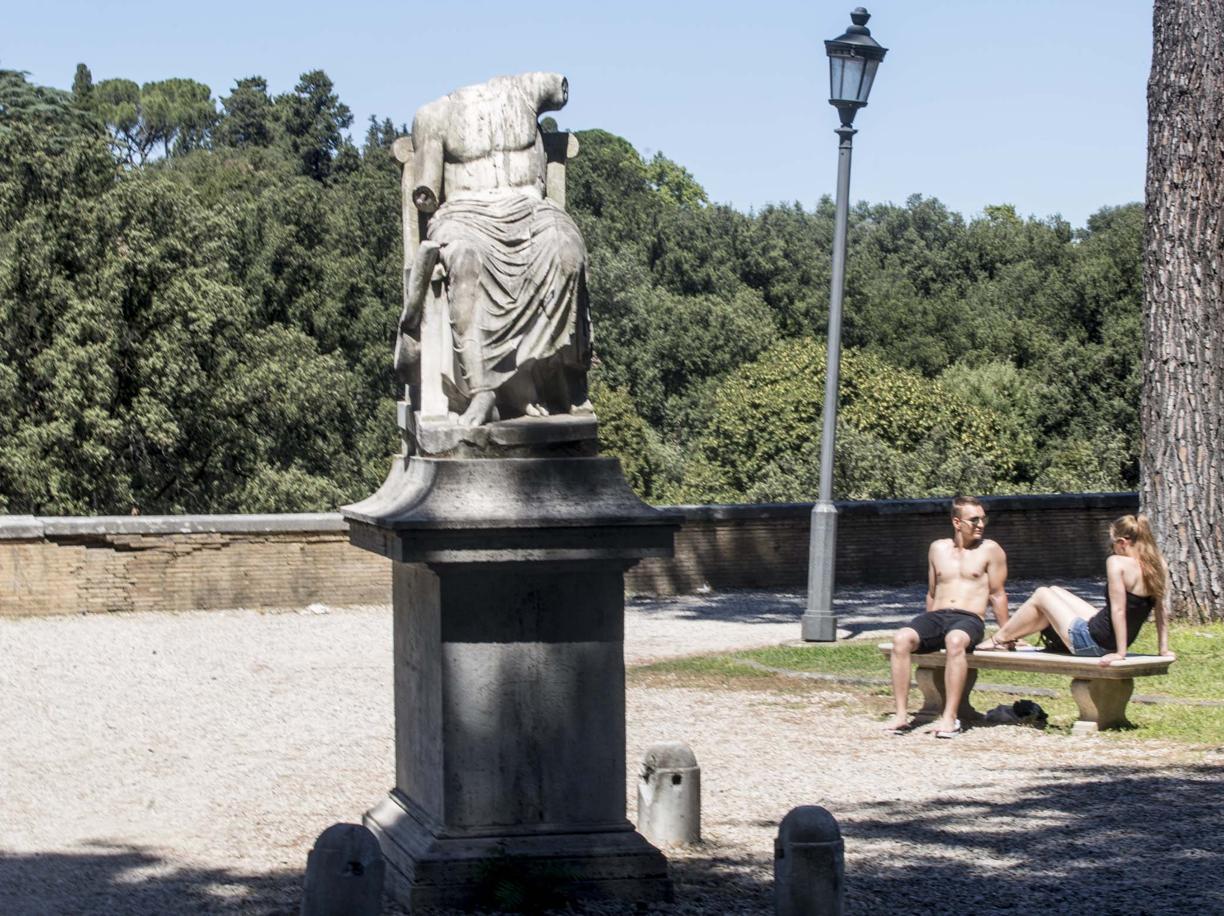New Populist Mayor Overwhelmed by Problems
Is this still Rome, the Eternal City? On a sunny day in mid-April, a rat bit little Marco, a three-year old child, in the leg, near the ankle. He was playing in the park of Villa Giordani, once a lovely place, with some remarkable ruins that were restored in the 1960s, thereby gaining the enviable status of “archeological park”. He was rushed to a public hospital, Umberto I, to be medicated.
In the Photo: Villa Giordani, the “Mausoleum”, the best preserved monument in the park. Photo Credit: Alessandro Zangrilli
What happened next was an angry letter of protest from the Minister of Health Beatrice Lorenzin to Virginia Raggi, Rome’s young new Mayor, an attractive 39-year old lawyer and member of the populist Five Star Movement – fast becoming the largest party in Italy, most recently blamed by the Italian health authorities for a surge in measles (it proposed an anti-vaccination law in 2015).
In the Photos: (Left) Mayor Virginia Raggi, (Right) Minister of Health Beatrice Lorenzin Photo Credit: Wikipedia and Biografie Online
Ms. Lorenzin did not mince her words: “After only one year in government, we do not expect Mayor Raggi to have solved the chronic problems of the budget or traffic, but the city should be at least clean and the urban décor restored.” According to Ms. Lorenzin, “the health emergency that I warned about two years ago requires immediate action against rats, seagulls, the tiger mosquito, not to mention lice and cockroaches.” Quite a list. And Ms. Lorenzin to conclude mournfully: “Who knows what awaits us tomorrow, with the summer at the door.”
Ms. Raggi lost no time to go on television the next day, taking the opportunity to request “special funding” and announcing she had prepared an “Agenda for Rome” that she would “shortly submit” to the government.
Romans, as might be expected, immediately expressed skepticism, asking what she had done with the funding that she already had. A week later, on the 2770th birthday of Rome (April 21, that’s the day Romulus killed his brother Remus and founded the city), she made a speech, doubling down on the notion of an agenda, saying “We have to make a pact with all the citizens, the institutions, tourists, entrepreneurs and the national government. We have to write an Agenda for Rome together.”
Related article: “REGENERATING ROME’S URBAN FABRIC”
What there is in this agenda, nobody knows. And who is writing it is a mystery. But she is good with words: “We are all fully aware of our History, the extraordinary artistic, natural and archaeological heritage that has made Italy’s capital a unique heritage of humanity. We must preserve what has been handed down to us and make it available to the world.”
Meanwhile, Rome’s problems that have been long brewing, some of them for decades, are all coming to a head. And this spring, the Italian mainstream media is full of horror stories. One blogger, listing everyday the photos and news of Rome’s newfound decadence called his blog Roma fa Schifo (Rome Sucks). At least one foreign journalist, Frank Bruni from the New York Times took note as he walked around Rome, appalled by the cigarette butts and the piles of garbage. He called it the “filthy metaphor of Rome“.
In the Photo: Garbage on a Roman sidewalk published by Roma fa Schifo (Rome Sucks) blog, taking aim at the Five Star Movement’s latest “fake news” that Rome did not have a garbage disposal emergency. Photo Credit: Roma Fa Schifo 8 May 2017
A Horror List of Rome’s Problems:
Wild boars: At first, they went unnoticed, just four of them descending from the mountains two years ago. Now troops of wild boars are regularly spotted in city streets at the foot of Monte Mario, feeding on spilled garbage. The authorities are even considering sterilizing the boars after a motorcyclist met his death in a collision with the animals on the Via Cassia.
Legambiente, an Italian environmental protection association, estimates that there are 64 wild boars in Rome now living on Monte Mario in a park that used to be a playground for the city’s children. As this video shows, the animals are taking it easy and have even dug ponds for themselves where they regularly bathe:
Video Credit: Fanpage Italy
Sex in public: It took place in broad daylight in the town center, on the sidewalk of Piazza Independenza. The photo went viral on social media and requires no comments, except to note that the coupling was suitably diverse (a black man and a white woman) and that indignation among Romans was universal.
Also, this is not the first time it happened, even though people in a historic palace on that piazza have regularly complained to the police. But the “vigili” here (as elsewhere in town) tend to do nothing or very little: They are not backed up by judges that regularly release the accused the next day, without indictment. Not an inducement for police work.
Garbage emergency and waste disposal: This is a complex problem that has been festering for a long time. We have all seen what happened in Naples a few years ago, with piles of garbage and a threat to human health that required repeated interventions of the army to clear the streets (in 2008 and 2011). Rome is clearly headed in the same direction, if nothing is done.
The problem has social and technical roots. Garbage collectors for a long time were not paid enough and were under-equipped. While that problem has been largely solved, a new one has emerged. The Italian legal system being what it is (always tilted in favor of the workers, a long-time legacy of the now extinct Communist party), garbage collectors, following a recent strike, obtained the wage raise they sought but refused to work the extra two hours per week (38 rather than 36) that had been requested in exchange. As a result, the problem of shortfall in manpower remains unsolved.
On the technical side, a sustainable disposal system for urban waste is in the making but it has not yet been fully developed; the old dumping sites are spilling over and communities around Rome resist any relocation of dumping sites near them, understandably taking a not-in-my-backyard position.
On 5 May, a dangerous “special waste” incinerator in the near-by town of Pomezia burst in flames, reminding all of us (disclosure: I live in Rome) of the threat to human health. The fire could be seen from Rome. The toxic clouds caused by burning plastic, oils, solvents and other dangerous “special waste” materials blew in the other direction, partly towards the sea and partly on the fields of the “agro Romano”, with the uncomfortable prospect that crops will be contaminated.
This problem is, however, not limited to Rome. In the Lazio region, there are 63 similar waste recycling plants. In fact, “eco-treatment” of dangerous waste has become a serious industry across the country (with the mafia said to be laying its hands on it), with a peak of 285 such plants in Lombardy, according to the Ministry for the Environment. In short, the Ministry is called upon to monitor a thousand dangerous eco-treatment plants in Italy. Expect more fires.
In the Photo: On 5 May 2017, fire destroyed the ECO-X plant that recycled plastics and other toxic waste, in Pomezia, south of Rome. Photo Credit: Corriere della Sera, Rome section
10,000 Potholes in the streets Anyone coming to Rome knows driving is dangerous, with everyone zipping around – scooters, cars, minivans, SUVs and more – with little regard for speed limits. But over the past twenty years, as the city sank in debt and couldn’t find funds to resurface roads, driving has become a dangerous slalom between 10,000 potholes. The number is not a joke. According to Codacons, a major consumer protection association, the 6,000 km (almost 4,000 miles) of city streets are pockmarked on average by one pothole every 45 feet, and that adds up to 10,000 potholes.
They cause a dozen accidents each day, with many citizens suing the city, thus adding to Rome’s financial woes. It would reportedly require one billion Euros (about $1.1 billion) to fix them, and since the city’s deeply in debt, it is unlikely that the money can ever be found.
In the Photo: Potholes in streets Photo Credit: Il Foglio
This problem has haunted all recent mayors of the city over the past twenty years – ever since Rome fell into a huge debt (pot)hole, largely a result of the ill-considered investments undertaken at the time to get Rome spruced up and ready for the Great Jubilee of 2000. This was a major Catholic Church year-long event that brought huge crowds of pilgrims to town, some 25 to 32 million, depending on who’s counting. Much was done to improve Roman traffic, tunnels and fast tramlines were built, while other projects fell on the wayside (like bike paths) or were delayed (like the metro’s third line, Linea C) due to lack of funding.
Undaunted at first, Ms. Raggi announced she would address the pothole problem piecemeal, one street at a time. She soon claimed progress, signaling that in just two weeks (from 15 to 31 December last year) 400 potholes had been covered up.
Again, Romans expressed skepticism that the asphalt poured into them would resist: For decades now, we’ve watched holes being filled with poor quality asphalt (not enough bitumen) that gives out with the first heat wave or heavy showers, like Swiss cheese.
Next, Ms. Raggi’s right arm and chief adviser got embroiled in a financial scandal and is now awaiting trial along with 46 others accused of corruption. The press was quick to dub this the “mafia capitale” case, as it was revealed that a vast ring of local gangsters, businessmen and politicians had been obtaining lucrative Rome city contracts for years if not decades.
Faced with the continuing potholes challenge, Ms. Raggi resorted to a clever, very lawyerly trick to address the problem. She had a new speed limit imposed, from 50 km/hour down to 30 km (less than 20 miles an hour), much to the dismay of speed-loving Italians who are not fooled: in the event of an accident, nobody will be able to sue the city as everyone will be found speeding.
Muggings and public safety at risk: Rome is beautiful for tourists (and the rich), but it is a town of despair for the poor. There are all kinds of poor people: the Gypsies (called “Rom” by the Romans, they reportedly number 4,500 and live in 9 “villages” around town); refugees and immigrants from Africa and the Middle East (in ever growing numbers); the jobless and disenfranchised (yes, Italians too, a result of the grim unemployment rate, 12% overall and 40% for youth).
Who takes care of the people in the streets? Health care is generally free but for the rest, food and housing, it falls on the private sector, charitable agencies, chiefly the Catholic Caritas, the Order of Malta and many others.
Unsurprisingly, violence occurs, muggings are often reported in certain areas, particularly around the central Termini train station. Most recently, a well-known television journalist was attacked along with her cameraman as she was covering immigrants arriving at Termini. In the studio of Matrix, the program on Canale 5 she worked for, her colleagues were horrified to see the video she was sending in, swinging wildly while the attack was going on. Her colleagues could not believe it was happening, literally, under their eyes.
Vandalism and Destruction: The list is endless and disheartening, new destruction is reported every day. I will just pick a few that struck me.
As you can see here, the monuments of the Pincio are increasingly at risk, decapitated, destroyed. How sad, this is such a lovely place to stroll in.
Photo Credit: The Rome Chronicle
Last year, the charming Bernini elephant in Piazza della Minerva was attacked by vandals who broke a tusk. This provoked a reaction and video surveillance was finally installed.
Photo Credit: Facebook/Naim
This year, it was the turn of the Colosseum sprayed with black paint. Reportedly, vandals working at 2.30 am, covered a pilaster with incoherent “tags”.
One could go on and on with examples of vandalism or simply poor taste: the fans of one soccer team hung four manikins dressed in the uniform of the rival team from a bridge near the Colosseum, earning general disapproval; tourists turn into loutish barbarians, setting up their camping tent on sidewalks, climbing monuments, washing themselves in ancient Roman fountains; urinating in the streets. Recently, fines have been set up (at €450 per offense) and some have already been levied against them.
What’s Next for Rome?
People’s patience has just about run out.
Yet it’s not as if Rome is unlivable. Much has been done in the past twenty years to help the city face climate change and traffic pollution. The city has repeatedly partnered with business to get its signature monuments restored: The Colosseum was scrubbed clear with funding from Tod’s, the Trevi Fountain with Fendi.
Also town traffic is regularly stopped whenever air pollution limits are exceeded; the ancient city center has been closed to private traffic for decades (only residents can drive) and since January 2017, it is closed to an additional 300,000 cars with heavily polluting engines; the previous Mayor closed a major artery that threatened the Colosseum and the Roman Forum, turning it into a mile-long walk-only area every Sunday; and now a city assessor announced that the Roman-paved Appia Antica, lined with ancient monuments, will be closed to private traffic this summer.
But Romans protest, even if some of the protest seems unfounded, almost capricious. For example, regarding the May 1st “Concertone”, a public concert broadcast on RAI television every year and drawing thousands to Piazza San Giovanni to listen to pop music (and drink beer), people expressed annoyance because the piazza’s grass lawns had not been mowed down before the event. This, however, pales in comparison to the annoyance felt by people who live in the neighborhood, including the sick in the near-by San Giovanni hospital, who are subjected to noisy music late into the night and dirty streets the next morning.
Yet for many citizens, the situation in Rome has become unbearable and they are taking it in their own hands. People have resorted to covering the potholes themselves. They have set up an association called “Tappami” (cover me up) and have their own Facebook page.
Photo Credit: Tappami
People also clean the parks and the streets, scrubbing out the graffiti off the walls (I’ve done that too!) and getting together in associations to do this – most notably “Retake Roma”, a no-profit organization that strives to give back to Rome its dignity.
Recently, the city authorities took notice. Starting in March 2017, instead of strengthening municipal garden services (as you might expect), they launched a “search” for “groups of volunteers” to clean public areas, man the gates of various parks around town, providing them with park gate keys, a bus card to travel, a whistle and sundry clothes, all for a total cost to the municipality of…€90,000 (about $99,000). A steal.
To control the problem of muggings at night, people are also coming up with their own solutions. For example, in my area, our local neighborhood group has found a couple of retired Carabinieri willing to work as watchmen, doing the rounds at night. As several of our neighbors were mugged in recent years, there is full support to pay for the service. I wonder if Ms. Raggi will start delegating police work to citizens as she has done with parks?
This might help solve the city’s funding problem but it is a slippery path to walk. The next step is vigilante policing, a return to the highly unsafe urban living of the 19th century. Admittedly, the past is very present in Rome, but a full return to it surely is not desirable.
Back to Marco, the child who got bitten by a rat. Since he had been previously vaccinated against tetanus – health authorities are fortunately stringent on ensuring that all children are fully vaccinated, the Five Star Movement notwithstanding – he suffered no sequels.
Recommended reading: “19-YEAR-OLD DEVELOPS OCEAN CLEANUP ARRAY THAT COULD REMOVE 7,250,000 TONS OF PLASTIC FROM THE WORLD’S OCEANS”


